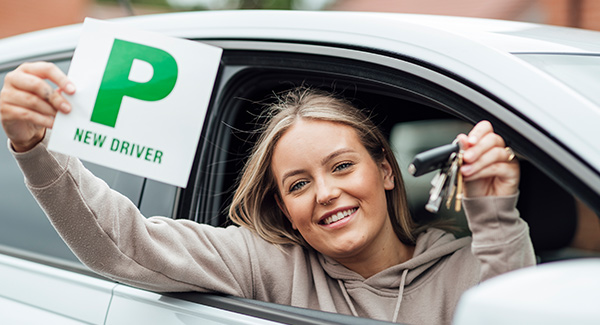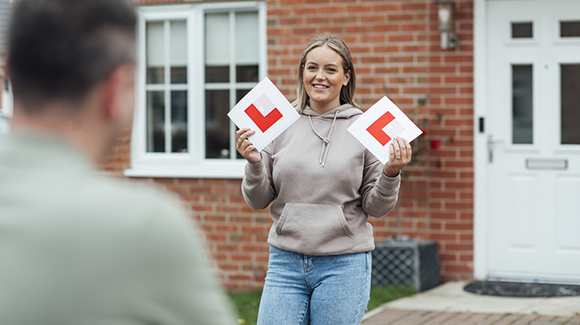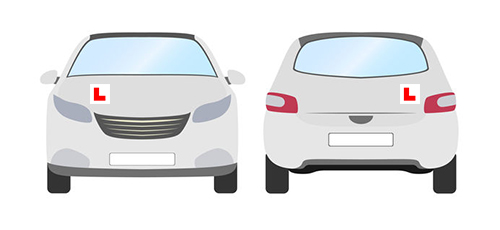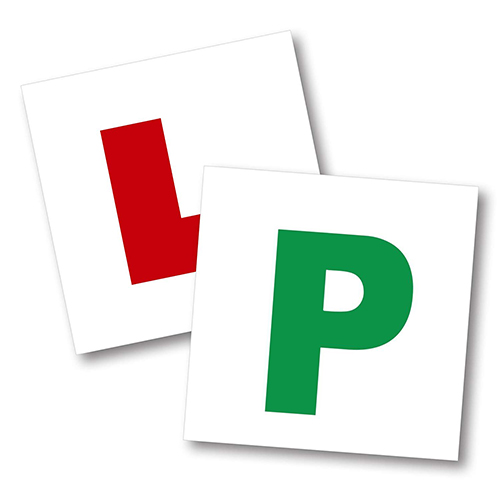L Plates: What You Need To Know Before You Drive
- Editorial Team
Learning to drive without L plates or not displaying them correctly could land you a fine and penalty points on your licence before you’ve even passed your test. This guide covers what you need to know about L plates, so you can concentrate on improving your driving skills and passing your test.
What are L plates?
In the UK, any vehicle driven by a learner driver, must have L plates displayed on the front and back of it. An L plate is a square sign with a red-letter L displayed on a white background. Learner drivers in Wales can use a D plate instead, due to the language variation.
The L stands for learner and warns other road users that a driver with less experience is in control of the vehicle. L plates should be removed or covered when the vehicle is not in use by the learner driver.

What are D plates?
In Wales, you may use either red D plates, red L plates or both. The D stands for dysgwr, which is Welsh for learner.
How many L plates do you need on a car?
You must display at least two ‘L’ plates, one on the front of the vehicle and one at the back, so that they can be easily seen by other road users.
L plate sizes
Your L plate must measure 178mm x 178mm square to meet the legal specifications. There are also specific dimensions for the red L itself and its distance from the plates border. Try to avoid trimming the edges or tidying up your L plates after general wear and tear as they may no longer meet the legal specifications.
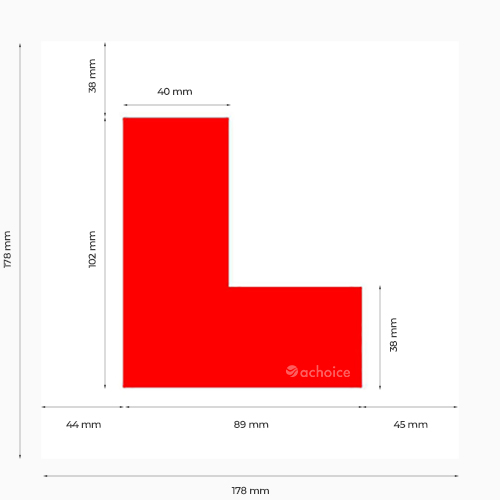
Types of L plates
L plates vary in quality, and it is important that you choose good quality L plates to ensure they don’t fall off. In general, there are three different types of L plates:
- L plates with magnetic strips at the top and bottom,
- All-over fully magnetic, and
- Sticky back, self-adhesive L plates
The self-adhesive L plates are often secure, but may leave marks on your car when removed. Magnetic plates can either be purchased with thin magnetic strips at the top and bottom, or fully magnetic with a strong magnetic backing. Whatever you choose, your L plates should:
- Be weather resistant
- Be waterproof and durable
- Not scratch your car
- Not fall off at higher speeds
- Keep your car clean after use
Your vehicle’s surface should be clean before fixing L plates, to ensure they stay in place.
Where to put L plates
L plates must affix to the front and back of the vehicle and be clearly visible to other road users from a reasonable distance. You should not fix them to your windscreen or anywhere else that can interfere with your view. Nor should they placed on the front grill where they can easily fall off or go into your engine compartment. You’ll also need to make sure that the entire plate is on display.
Penalties for not displaying L plates
You could face a fine and/or up to 6 penalty points for failing to display L plates correctly on the vehicle you’re learning to drive in. A PL10 – ‘driving without L plates’ offence code can be put on your driving record, for committing this offence.
A common problem with ‘L’ plates is that they can come off whilst driving, so it helps to keep spares in your vehicle to keep yourself on the right side of the law.
Where to buy L Plates?
You should buy ‘L’ plates from a reputable retailer to ensure that they meet the legal requirements.
Is it legal to make your own L plates?
It is legal to make your own L plates providing they meet the legal requirements. You may also round off the corners of the background. You can print your own L plates but they must be durable and weather resistant.
Driving with L plates when not a learner
L plates should be removed when the car is not in use by a learner driver (unless it’s a driving school vehicle). This also applies to when you pass your driving test. it is not illegal to keep them on, but you could get pulled over by the police who may ask you to remove them.
If you’re a new driver, you may use the green probationary P plates instead to let other road users that you’ve just passed your test. This is voluntary and unlike with L Plates, there are no penalties if they are incorrectly displayed. They may give you some reassurance and leeway with other road users if you make a mistake. You can leave P plates on your vehicle for as long as you like.
Further reading
Share this article
Table of Contents
More posts
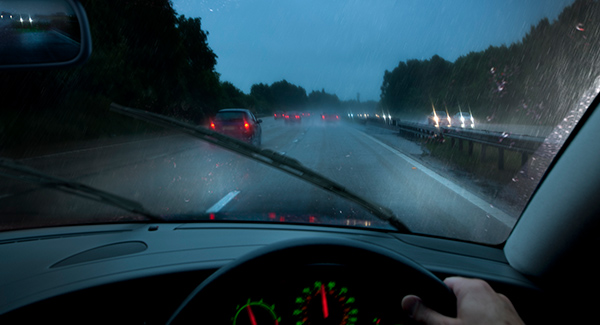
Do Black Boxes Have Nighttime Driving Restrictions?

How To Give Your Vehicle A Spring Clean
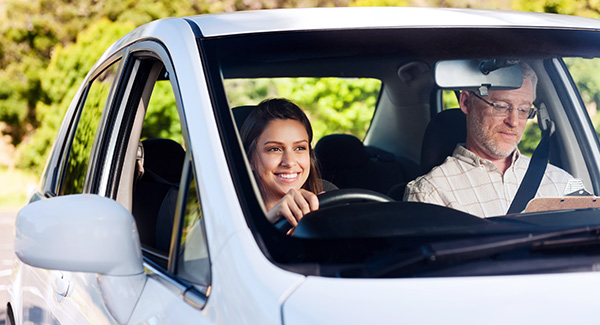
Should You Take An Intensive Driving Course?
